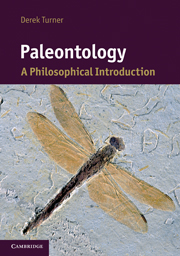Book contents
- Frontmatter
- Contents
- List of figures
- Acknowledgments
- 1 Introduction
- 2 A new way of seeing the fossil record
- 3 Punctuated equilibrium
- 4 Species and macroevolution
- 5 The case for species selection
- 6 Real trends, relative progress
- 7 Dynamics of evolutionary trends
- 8 Evolutionary contingency
- 9 Diversity, disparity, and the Burgess Shale
- 10 Molecular fossils
- Bibliography
- Index
10 - Molecular fossils
Published online by Cambridge University Press: 05 June 2012
- Frontmatter
- Contents
- List of figures
- Acknowledgments
- 1 Introduction
- 2 A new way of seeing the fossil record
- 3 Punctuated equilibrium
- 4 Species and macroevolution
- 5 The case for species selection
- 6 Real trends, relative progress
- 7 Dynamics of evolutionary trends
- 8 Evolutionary contingency
- 9 Diversity, disparity, and the Burgess Shale
- 10 Molecular fossils
- Bibliography
- Index
Summary
Molecular clocks vs. the fossil record
Evolutionary change involves certain changes at the molecular level: the replacement of some bits of DNA by others, as well as the replacement of some amino acids – the building blocks of proteins – by others. These days, it is a fairly straightforward matter for scientists to look at DNA sequences in different living organisms. It is also possible to measure the differences in DNA with great precision. To give just one example, Heckman et al. (2001) studied the proteins found in the cell nuclei of green algae, mosses, and plants. They measured differences in the amino acids that make up seventy-five different proteins found in the cell nuclei of each of these three groups. If you know the average rate of change in the genes or proteins, then you should be able to work backwards in order to determine how much evolutionary time it took, at that rate of change, to get from a common ancestor in the past to the living organisms that we observe today. Using this approach, Heckman and colleagues estimated that land plants diverged from green algae a very long time ago – just over 1 billion years, give or take 100 million or so. This is just one of many recent studies that take advantage of what has come to be known as the “molecular clock” in order to date past evolutionary events, and in particular those points of divergence where the tree of life splits.
- Type
- Chapter
- Information
- PaleontologyA Philosophical Introduction, pp. 197 - 208Publisher: Cambridge University PressPrint publication year: 2011



